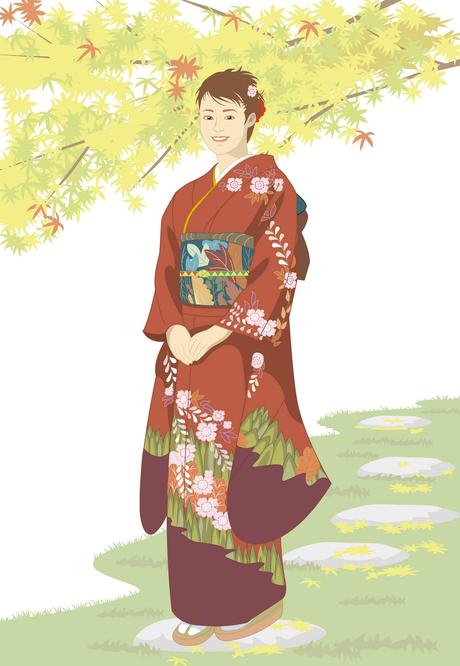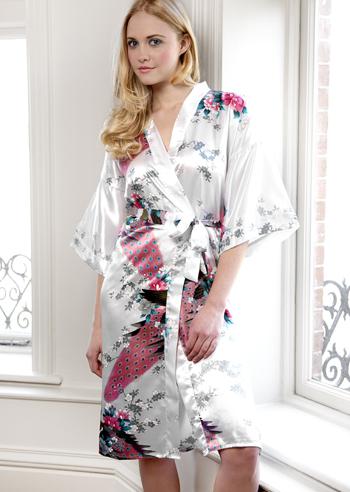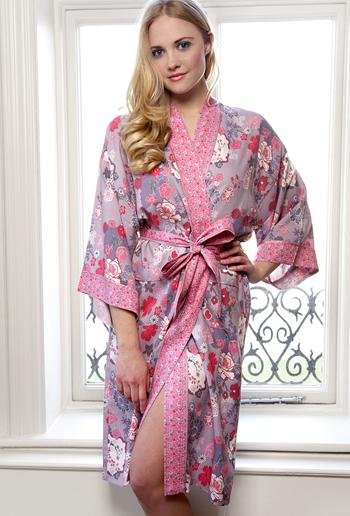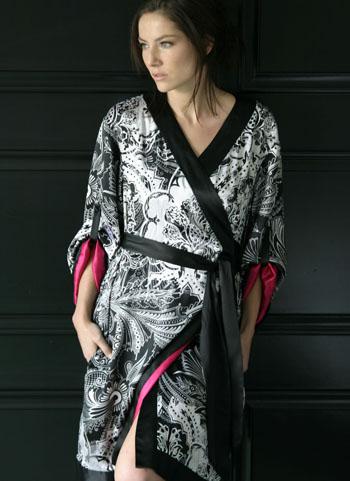 Originally, "kimono" was the Japanese word for clothing. But in more recent years, the word has been used to refer specifically to traditional Japanese clothing.
Originally, "kimono" was the Japanese word for clothing. But in more recent years, the word has been used to refer specifically to traditional Japanese clothing.
Traditionally, Japanese people wore ensembles of separate upper and lower garments but during the Heian period (794-1192) kimonos were introduced by cutting pieces of fabric in straight lines and sewing them together. Making clothes in this way meant that a kimono would suit any body shape. Another advantage of these gowns was that they were easy to fold and suitable for all weather as they could be easily layered depending on the season. Soon kimonos became a part of Japanese people's everyday lives.
Today in Japan kimonos are reserved for special occasions such as weddings or funerals, but in the Western world we can see design influence from this humble robe.
This Lunn Antiques Satin Kimono Dressing Gown, has a cut influenced by the simple kimono shape and features a very Japanese style of pattern. £30

The Japanese Festival Kimono Dressing Gown, by Caro London is £42, and is heavily influenced by colourful Japanese culture.

If you fancy something a little more opulent, the beautiful Ligne De Soie Cashmere Silk Robe is in a sophisticated style but with a pop of fuscia pink lining. It also features pin-up sleeves. £195.

Idlewild

